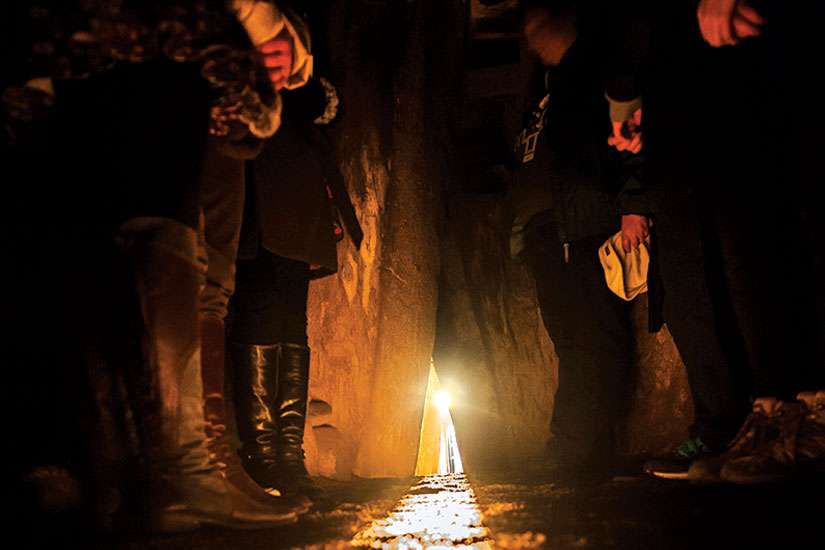Why certain thoughts tunnel in the mind from one place to another is for smarter people — scientists or philosophers — to explain. But allow me to clarify what occurred during that cold, wet and windy afternoon in Ireland.
Initially, I was fascinated by the construction of Newgrange, a United Nations World Heritage Site north of Dublin, built during the Neolithic period around 3,000 B.C., making it older than Stonehenge and the Egyptian pyramids.
It is 85 metres in diameter and 13.5 metres high. The main feature of Newgrange is a 19-metre passage which leads to a chamber with three alcoves, and the passage and chamber form a cross shape.
How did these ancient people lift the heavy stones? Before the invention of the wheel, how did they move the mega-boulders and slabs of white quartz many kilometres to Newgrange? How did they engineer a roof that has never leaked when we feel fortunate to get 20 years out of shingles on our roofs today!
Then there is the solstice aspect. Newgrange was carefully constructed to admit a single ray of light into the darkness of the inner chamber at the winter solstice (the days around Dec. 21.) This, some believe, was to symbolize the eternal life of the deceased; a powerful symbol of the victory of life over death. How did they figure out all the mathematics and angles for this to occur year after year, and still today?
Our Newgrange guide, Frank, told us it took 90 years to build and the average lifespan for these Stone Age people was a mere 30 years. Therefore, at least three generations of people invested their lives to build Newgrange. What an investment. But why?
Frank, a cross between the comically ghoulish Marty Feldman in Young Frankenstein and the exacting disciplinarian “Soup Nazi” in a famous Seinfeld episode, was one of the best guides during our trip across Ireland, both for his knowledge and his theatrics. Hooded and silent, he initially marched us 150 metres up the hill to the Newgrange burial site. Standing in the cold and wind outside the chamber’s entrance, in monotones he told us the 5,000- year-old story of Newgrange. It was fascinating.
Then he read us the riot act of various do’s and don’ts before we proceeded to enter the long, dark, narrow corridor leading to a burial chamber under thousands of tonnes of rock placed above us so long ago. Frank’s confidence, knowledge and even his scowls evoked a certain confidence there was nothing to fear, even if one of us happened to get stuck between a rock and hard place. He was asked why these people would invest so much in building this passage tomb.
So much is unknown, he answered, but added it is a relatively modern phenomenon to not invest time and effort preparing for the next life. He cited the construction of pyramids, temples and grand cathedrals over the centuries as similar investments.
And that’s when I started to think about today’s cultural edicts of “you only go around once,” “live for the moment” and “you can’t take it with you.” Even the arrogant Victorians (“who believed there was nothing they could not improve upon,” as Frank said) were fiercely interested in life beyond our days on Earth.
Why, I thought, are so many people so disinterested today in what will come tomorrow in death? Not everybody, but too many seem to ignore thinking about it until death is near. Perhaps it is due to the rise of atheism, or maybe it’s nihilism or simple materialism of the modern age.
We give lots of thought to career moves, vacations, retirement, even politics. But do we give enough thought to prepare ourselves for our inevitable death and what follows?
Our lives are so stunningly short. And 5,000-year-old Newgrange reminded me of that once more. And even though it was built long before Jesus came to Earth, it is a place that can strengthen one’s faith in Jesus: what better way to prepare for the next life — like that beam of light emerging at the winter solstice — than by following the teachings of Jesus.
(Brehl is a writer in Port Credit, Ont., and can be reached at bob@ abc2.ca or @bbrehl on Twitter.)


